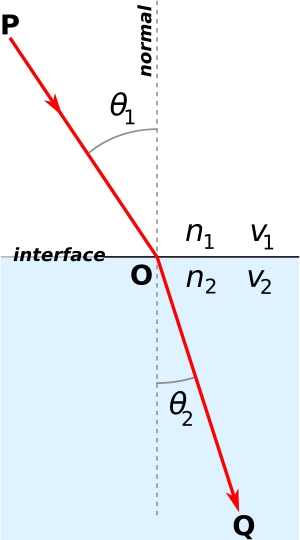Optics (Ptolemy) facts for kids
Optics is an ancient book written by the famous Greek scholar Ptolemy in the 2nd century AD. It's all about how light works. The book talks about reflection (when light bounces off surfaces), refraction (when light bends as it passes through different materials), and colour.
Ptolemy probably wrote Optics later in his life, around the 160s AD. This book is very important in the early history of optics, which is the study of light.
The original Greek version of Optics is completely lost today. We only know about it because parts of it were translated into Latin around 1154. This Latin translation was made by a person named Eugene of Palermo. He used an Arabic translation, which was likely based on the original Greek. Both the Greek and Arabic versions are now gone.
Contents
How We Know About Ptolemy's Optics
Even though the original Greek and Arabic copies of Optics are lost, we know about Ptolemy's work from other scholars.
For example, Ibn Al-Haytham, a famous Arabic scientist who wrote the important Book of Optics around 1020, knew about Ptolemy's book. Other Arabic scholars also studied it.
There are only a few old mentions of the Greek version of Optics. These mentions come from the 4th, 6th, and 11th centuries.
Luckily, the Latin translation made by Eugene of Palermo survived very well. There are 13 copies of this Latin text still existing today. The oldest copies are from the early 1300s.
Influence and Rediscovery
Eugene's Latin translation of Optics was important for how the study of light developed in the Middle Ages and the Renaissance. However, its importance became less when a Latin translation of Ibn Al-Haytham's book, De aspectibus, was published around the year 1200.
Famous thinkers like Roger Bacon mentioned Ptolemy's Optics. Another scholar, Regiomontanus, even planned to print a version of it, but it never happened.
By the 1700s, new discoveries in science made Ptolemy's work seem old-fashioned. People thought the book was completely lost. But in the late 1700s, scholars found copies of the Latin text again.
The first full printed version of the book finally came out in 1885. A very important and detailed version was published by Albert Lejeune in 1956.
What Ptolemy's Optics Explains

Ptolemy's Optics contains the oldest surviving table that shows how light bends when it goes from air into water. This is called refraction.
For a long time, people thought Ptolemy got these numbers by doing experiments. However, it seems he might have adjusted some of the numbers using a math pattern. This was a common way for astronomers to organize data that changed unevenly.
Still, according to Mark Smith, who translated the book into English, Ptolemy's tables were based on real experiments. He just "adjusted" the data to make it more organized and understandable.
How We See Things
Ptolemy also had a theory about how we see. He believed that rays, or a kind of flow, came out of the eye. These rays were sensitive and carried information back to our minds about how far away objects were and how they were positioned.
He thought that the size and shape of something we see were decided by how big it looked to our eye (the visual angle) combined with how far away it seemed and its position. This was one of the first ideas that our brains help us understand the true size and shape of objects, even if they look different from different distances.
Ptolemy also explained many things about light and colour, as well as size, shape, movement, and how we see with both eyes (binocular vision). He even divided optical illusions into two types: those caused by physical things (like light bending) and those caused by how our minds judge things.
He tried to explain why the sun or moon illusion happens. This is when the sun or moon looks much bigger when it's near the horizon. He thought it was because it's harder to look upwards.
See also
- History of optics
- Euclid's Optics


